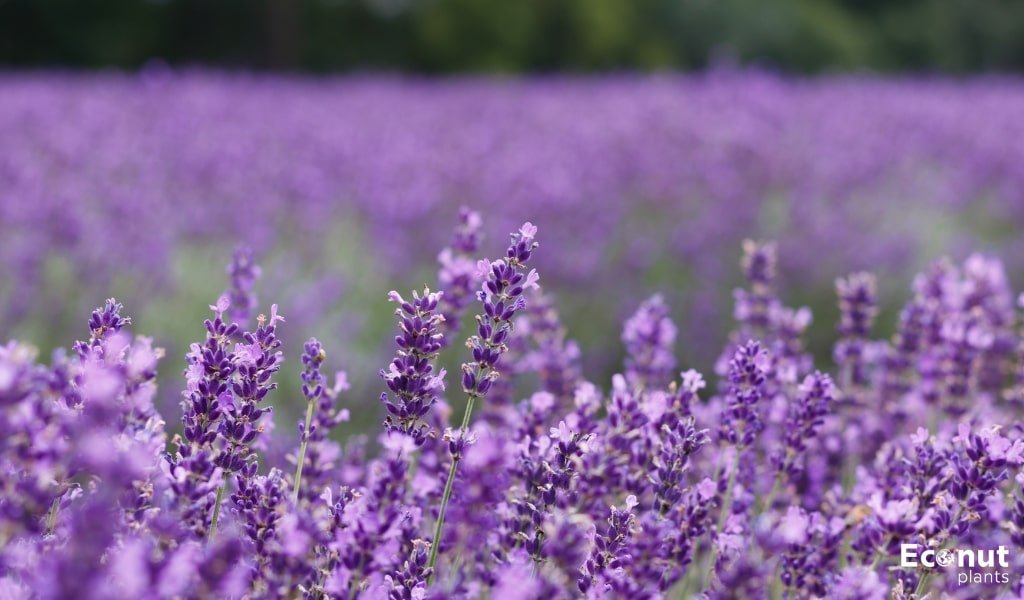Lavender, or Lavandula spp., is a somewhat difficult plant to grow and requires careful attention. However, the fragrance, soap, and perfume businesses do not produce this very scented, versatile herb for commercial use.
Planting lavender for its fragrance and beauty alone is one thing; another is to collect the best, biggest, and greatest quantity of buds and flowers for your home. Here are some pointers for starting a plentiful lavender crop.
Lavender Blooming Seasons
The majority of lavenders flower in the summer, when they increase annually. Blooms can appear early in the season, late in the season, or even continuously throughout, depending on the variety. Lavender varietals from Portugal, England, Spain, and France are widely available.
French Lavender: French lavender is grown as an annual in the lower zones while only being hardy in zones 8 and 9. In its hardiness zones, it can bloom year-round, and in warmer climates, it reliably blooms from early summer until October. This lavender has a distinct appearance because of its serrated leaf but has less fragrance than other varieties.
Spanish Lavender: Butterfly lavender, another name for Spanish lavender, has the most spectacular blossoms, with two blooms per stalk that resemble rabbit ears or butterfly wings. Where pleasant summers and moderate winters are experienced. Stoechas starts to blossom in early May. A third, smaller bloom occurs in August or early fall, after a more abundant bloom in June.
Portuguese Lavender: Spike lavender is occasionally used to identify it, as it is recognized by its potent scent and wide, evergreen leaves.
English Lavender: English cultivars ‘Hidcote’ and ‘Munstead’ are among the most widely used. Pruning techniques and types affect bloom times. Even so, the majority only bloom for three to four weeks in the early to mid-season in June or July. After the initial bloom, you may be able to get a complete flush if you give the plant a little pruning.
How to Maximize Lavender’s Blooms
Pruning
Correct pruning is crucial for maximizing bloom and harvest while also extending the life of your lavender plants. Pruning and harvesting are synonymous during the growing season.
- If there aren’t many blossoms on the plant, remove them down to the first set of leaves. Avoid cutting through the stem’s woody portion.
- As a result, everything progresses to a more thorough second flush.
- Remember that some kinds can take up to three years to yield a sizable harvest. Have patience.
- Every year, plants must undergo severe pruning that removes up to one-third of their total size. When the growing season ends and the temperatures begin to drop, this is one way to channel energy back into the roots. For young plants with shallow root systems that have not yet grown, late autumn trimming is very beneficial.
- In the spring, rigorous trimming promotes new growth. When fresh growth appears at the base, wait for it to reduce. Mature plants benefit most from early spring pruning, which promotes fresh green growth.
Fertilizer and Watering
Reduced blooms might result from over-fertilization. While young plants may benefit from early spring feeding with bone meal, blood meal, or kelp, lavender usually grows well in poor soil provided the pH is slightly alkaline.
Wet feet are not tolerated by these aromatics. Shallow roots deteriorate rapidly if left in water. Plant where there is enough drainage, or till sand into the planting bed. To improve drainage around the roots and let the soil dry out in between watering, mulch with a bed of pebbles.
Also Read: Lavender Companion Plants
What to Do if You’re Lavender Plant Isn’t Blooming
If you’re having problems getting the most out of your equipment, see this list for potential problems and fixes.
- Are you cultivating the appropriate kind for your region?
- Is your plant older than two years old? Lavender takes up to three years to produce a good crop and flower set.
- After every bloom, are all the flowers clipped? This encourages more blossoms. Additionally, you ought to prune your plant at least twice a year. Trim down as much as one-third of the plant in late autumn to promote root development, or as soon as new growth starts at the base in early spring.
- The plant is now very woody. Poor pruning is the cause of this problem.
- Restart a twice-yearly program to remodel the plant, eliminating any dead growth in areas where springtime brings no green growth. To encourage healthier, bushier foliage, keep trimming single blooms and gradually reducing green growth throughout the season.
- Get rid of the fertilizer and wait to water your plants until they are completely dry.
- Make sure the soil pH is slightly alkaline and that the planting area drains properly.
FAQ
How can a lavender plant be made to bloom?
First, check that the kind you plant is appropriate for the growth zone. After the plant is at least two or three years old, don’t expect to see many flowers, but keep up regular care and pruning. Restrict how much fertilizer and water you apply.
How many times a year does lavender bloom?
Perennial lavender plants thrive in warm regions and can produce flowers throughout the year. Several cultivars typically produce a few stems in the early spring, a larger flush during the growth season, and a lesser bloom in the late summer or early fall.
What are some ways to lengthen the lavender bloom period?
Pruning with care and creating the right environment for growth yields the greatest lavender blossoms. To keep your variety blooming, remove the flowers and stems with buds as the spikes mature. Give it the proper care.

